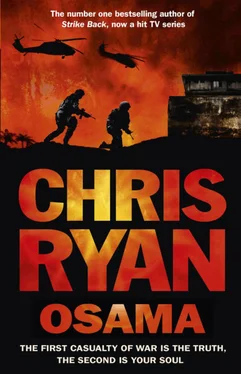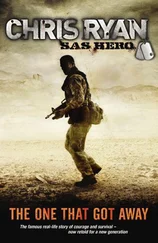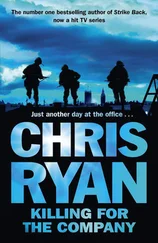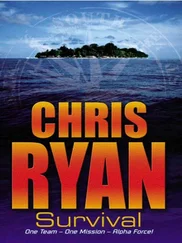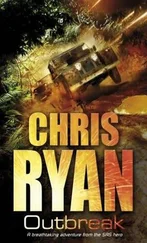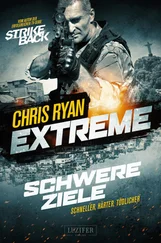‘When the decision to assassinate has been reached, the tactics of the operation must be planned, based upon an estimate of the situation similar to that used in military operations.’
From declassified CIA manual ‘A Study of Assassination’
‘We will kill bin Laden. We will crush Al-Qaeda.’
Barack Obama, 7 October 2008
The White House Situation Room, Washington DC, USA. 1 May 2011, 1430 hours EST.
So this is what people look like, thinks Todd Greene, when they are about to witness a death.
The official photographer to the President of the United States takes his third picture in as many minutes. It is of a plain, narrow room with a long mahogany table, crammed full of laptops and polystyrene coffee cups. Thirteen men and two women are fixated by a screen on the wall at one end of the room. Some stand, their hands covering their worried mouths, their foreheads creased. Others sit: the President in the corner, his white shirt dotted with sweat stains, the Vice President to his right and his chief military adviser, General Herb Sagan, to his left. Unlike those of the President, the VP and most of the others in the room, Sagan’s clothes are immaculate. He wears a blue uniform, its lapel emblazoned with line upon line of medal flashes and decorations that Todd does not recognize. He thinks Sagan has the face of a man whose career will be defined by what happens in the next sixty minutes, 3000 miles away in a small town in Pakistan named Abbottabad.
The screen itself shows a dark image. It is the inside of a stealth-configured H-60 Black Hawk, specially designed to reduce radar splash, a dish-shaped cover over the rotors and with an infra-red suppression finish. This is top-secret stealth capability, Sagan has briefed everyone in the room. It will allow the aircraft to enter Pakistani airspace undetected. The juddering visual feed is from the helmet camera of a US Navy SEAL. For now, the sound is turned down low. There’s nothing to hear, other than the dull grind of the chopper circling in dark Afghan skies.
The VP speaks. ‘That guy on screen. What the hell does he have written on his armband?’
Sagan blinks at the politician he so clearly loathes. ‘His blood group, Mr Vice President, sir.’
The VP nods, embarrassed. ‘I see,’ he mutters.
Sagan interrupts. ‘Mr President, respectfully, DEVGRU are ready to enter Pakistani airspace. They need your authorization to continue…’
The President looks around the room. Nervous eyes look back at him.
His own eyes fall to documents on the table. Todd knows what they are: aerial maps of a compound in Abbottabad, taken from high altitude by a stealth drone. One of these grey, bat-winged spy planes is hovering over that faraway town right now, controlled from an operations base in the Nevada Desert. And next to the aerial maps is a photograph of a high-walled compound, taken three months ago by a plainclothes CIA operative. A hazy grey image of a man whose daily habit is to walk up and down outside the house within the compound walls. Despite everything – their surveillance from the air and from the ground, and their covert attempts to gather DNA samples from the occupants of the compound – it has been impossible to make a positive identification of the man. The agents involved simply refer to him as ‘the Pacer’.
But the Pacer’s strolling days are numbered.
‘You just need to give me the go order, sir…’ Sagan is polite, but tense. Perhaps even a little exasperated.
‘The back-up team?’ the President asks.
‘Three Chinooks,’ Sagan confirms. ‘Twenty-four men. They’re on-line by the Indus River, Mr President, ten minutes’ flight time from target Geronimo. That’s in addition to the attack team in the Black Hawks.’
‘We have surveillance on the compound? We’re sure of no unusual activity?’
‘Affirmative, Mr President.’
‘And our British cousins?’
‘Securing the Doctor and his family, Mr President. The Pakistanis won’t know what we’ve been doing in Abbottabad so long as we keep the Doctor out of the hands of the authorities. The British have instructions to maintain the cordon and stay out of the compound.’
He looks back up to the screen. Through the helmet-cam footage, Todd sees the face of one of the SEALs staring back, almost as though he is listening and waiting to hear the President speak. Half his face is in shadow. Moonlight, flooding in from one side of the Black Hawk, lights up the other half, revealing goggles propped up on the helmet and a boom mike beside his mouth.
The President gives a slow but distinct nod.
Sagan wastes no time. He lifts his lapel and addresses an unseen colleague via the microphone pinned to his uniform.
‘This is Sagan. I have a go order from the President. Start the clock on Operation Geronimo. Repeat, start the clock on Operation Geronimo. Confirmation code Charlie Alpha Niner.’
He turns back to his commander in chief.
‘We’ll know within the hour, Mr President,’ he says.
Abbottabad, Pakistan. 0030 hours.
‘I’m telling you, brudder: if he doesn’t stop squealing, I’m gonna frickin’ do him.’
Joe Mansfield looked over his shoulder. In the shadows five metres behind him, tied to a rickety wooden chair and with several layers of packing tape stuck over his mouth and eyes, was a thin, terrified Pakistani man. He was the owner of this small house. Nobody important. Just in the wrong place at the wrong time. His body was shaking and the sound escaping his taped mouth was high-pitched. He shifted in his chair and its legs made a scraping sound against the wooden floor. Standing between Joe and the prisoner was Joe’s best mate Ricky Singh. Ricky had murder in his eyes.
‘Take it easy, big guy,’ Joe said. ‘No rounds if we don’t have to.’
Ricky was a couple of inches shorter than Joe, but broader about the shoulders and torso. Second-generation Indian, with an accent that was more Leicester than Lahore, he was the only currently serving member of the Regiment who could blend into the background in Pakistan without darkening his skin. Useful back in the Stan, where they’d spent the past three months erasing insurgents from the badlands where the green army wouldn’t set foot; and it made him a shoo-in for a job like this. His hair was shoulder-length, and like Joe – like all SF personnel currently operating in this part of the world – he wore a full beard. Ricky called everyone in the Regiment ‘brudder’, like he had the biggest family in the world.
‘I’ve got my blade,’ he muttered. But he walked back to the OP. Their captive fell silent – maybe he realized his noises were making Ricky feel like doing something about them – while Joe continued to scan the area outside.
They were holed up on the first floor of a very basic building. The room – which they had reached by means of a rickety wooden staircase that emerged from a ground floor that housed nothing but an unflushed toilet and an old bicycle – was about six metres by four, and almost bare. There was one window, slung open. As soon as darkness had fallen, Joe and Ricky had fixed up a three-metre length of net curtain from the bottom of the window to the ceiling, at an angle of forty-five degrees. This would hide movement inside the room from anyone looking in. Joe had cut a rectangular hole, the size of a letterbox, in the centre of the netting, and erected a tripod behind it. He had three sets of optics to fit on the tripod: a pair of high-powered Canon binoculars, a Spyglass thermal-imaging device and a night sight.
The rest of the room was a lot less hi-tech. The ceiling, bowed and cracked, looked as if it might collapse at any moment. There was a mattress in one corner, covered by a single, dirty sheet and the two sets of robes Joe and Ricky had been wearing over their gear. A ceramic hookah stood next to it. On the opposite wall, hanging at a slight angle, was a yellowed, grease-spotted piece of parchment with some Arabic script – something from the Koran, probably. Beneath it was a small cooking area with a tiny stove. The place stank in the heat – a musty smell of decay mixed with the spicy aroma of whatever the occupant had last eaten, its remnants still in a battered saucepan on the stove. The air buzzed with the sound of a single fly, as it had done all day. All in all, it was a dump. But a dump that had one advantage, even though its owner didn’t realize it. Outside the window was a single-tracked road. Beyond that, the five-metre-high walls of an enclosed compound.
Читать дальше
